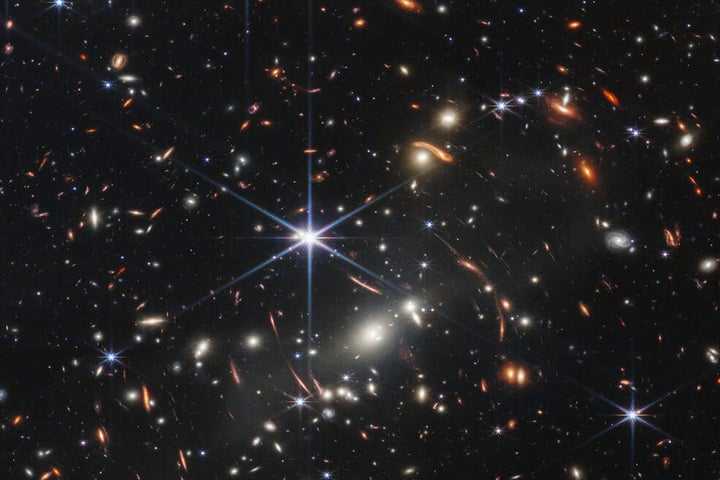
Cosmologists and astronomers reacted with awe Monday after NASA released the first full-color image from the James Webb Space Telescope, heralding the project as a new frontier in space exploration that will allow humanity to view the earliest days of the universe.
President Joe Biden unveiled the infrared image during a brief event at the White House. Scientists hope the revolutionary telescope — a $10 billion collaboration between NASA, the European Space Agency and Canadian Space Agency — will document the first stars and galaxies that appeared after the Big Bang, about 14 billion years ago.
The image took less than a day for the Webb telescope to capture. (A high-resolution version of the image is available here.)
The photo, which NASA said represents the “deepest and sharpest infrared image of the distant universe to date,” shows a galaxy cluster known as SMACS 0723 as it appeared 4.6 billion years ago. The image, which features thousands of galaxies in an array of colors and swirls, represents just an iota of the night sky.
“If you held a grain of sand up to the sky at arm’s length, that tiny speck is the size of Webb’s view in this image,” NASA wrote on Twitter. “Imagine — galaxies galore within a grain, including light from galaxies that traveled billions of years to us!”
Scientists said Monday that the “deepest view” title won’t last long as they put the Webb telescope to work.
Astronomers showcased on Twitter the sheer ability of the Webb Space Telescope compared to its predecessor, Hubble.
NASA will release four other images at 10:30 a.m. EDT Tuesday during a video livestream from its Goddard Space Flight Center, a small selection meant to show off the power of the Webb telescope and the types of images researcher will collect over the next two decades.
Those targets will include the Carina nebula, one of the largest and brightest in the sky, home to massive stars several times larger than the sun. NASA will also home in on the Southern Ring nebula, an expanding cloud of gas surrounding a dying star, and Stephan’s Quintet, the first compact galaxy group ever discovered.
